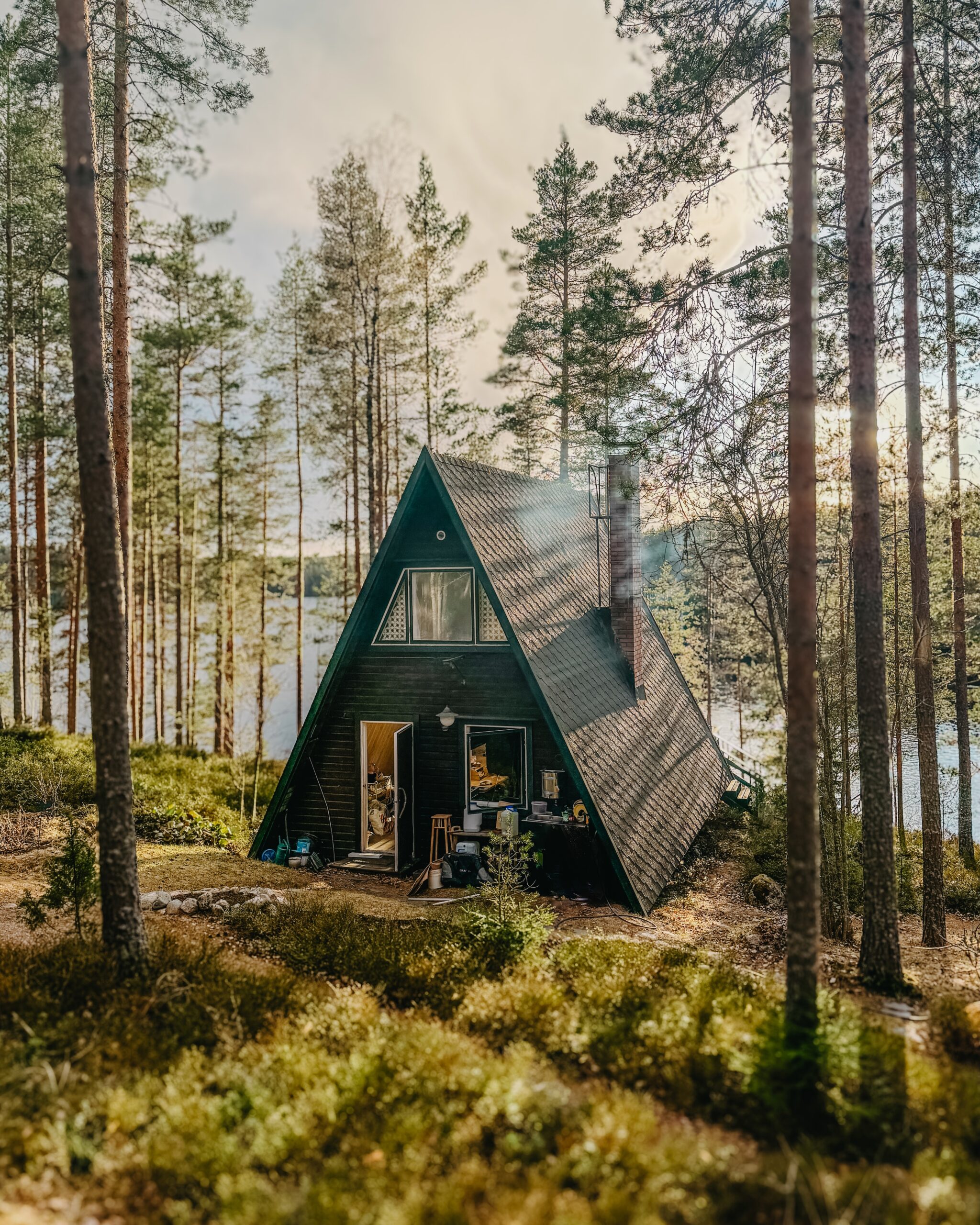
Guide to buying a summer cottage in Finland & FAQ
Dreaming of owning, and buying a summer cottage in Finland? With its pristine lakes, lush forests, and endless summer days, Finland offers the perfect scenery for disconnecting from daily life and enjoying pure nature. Whether you’re looking for a rustic retreat deep in the woods or a cozy cabin by the water, buying a summer cottage in Finland is a dream for many, but also full of questions.
In this guide, I’ll walk you through everything you need to know, from choosing the perfect location to understanding the legalities, and answer some frequently asked questions to help you on your journey to finding your idyllic Finnish getaway.
DISCLAIMER: I am speaking from personal experience, and own research. I am not a lawyer or real estate professional in any way. This post is intended for some guidance, but not as a definite source for information. Every case is different. Thanks!
In this article:
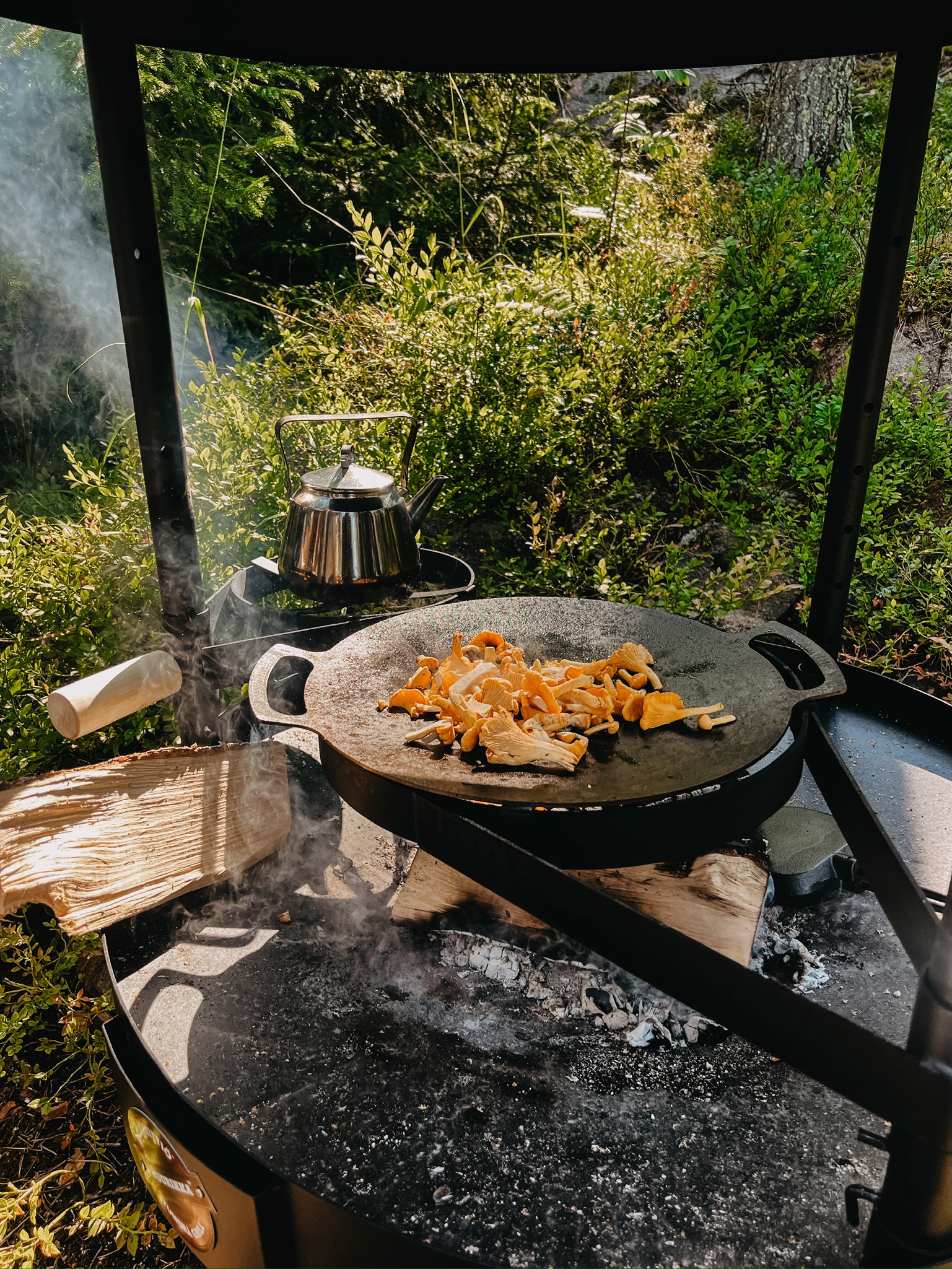
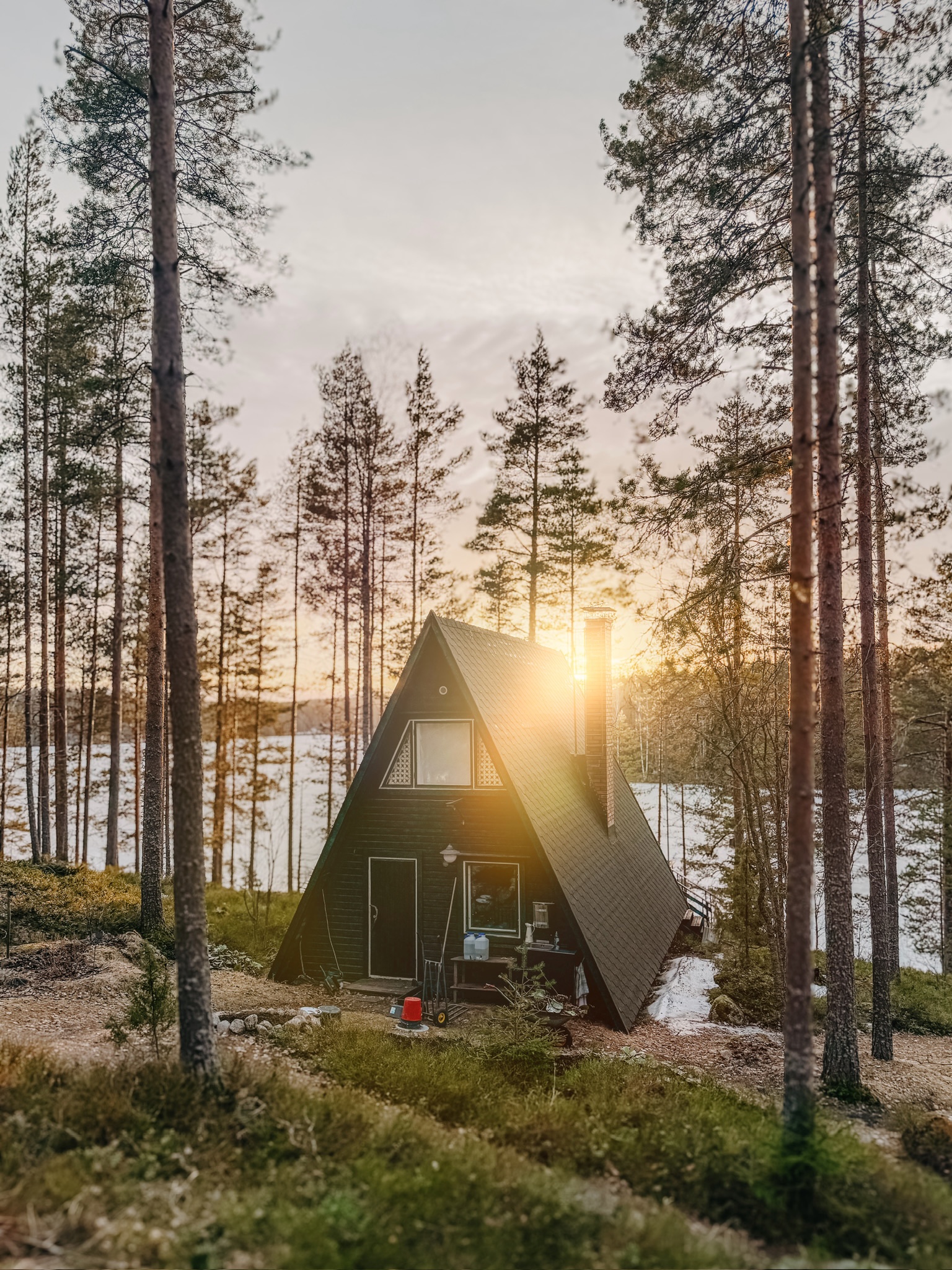
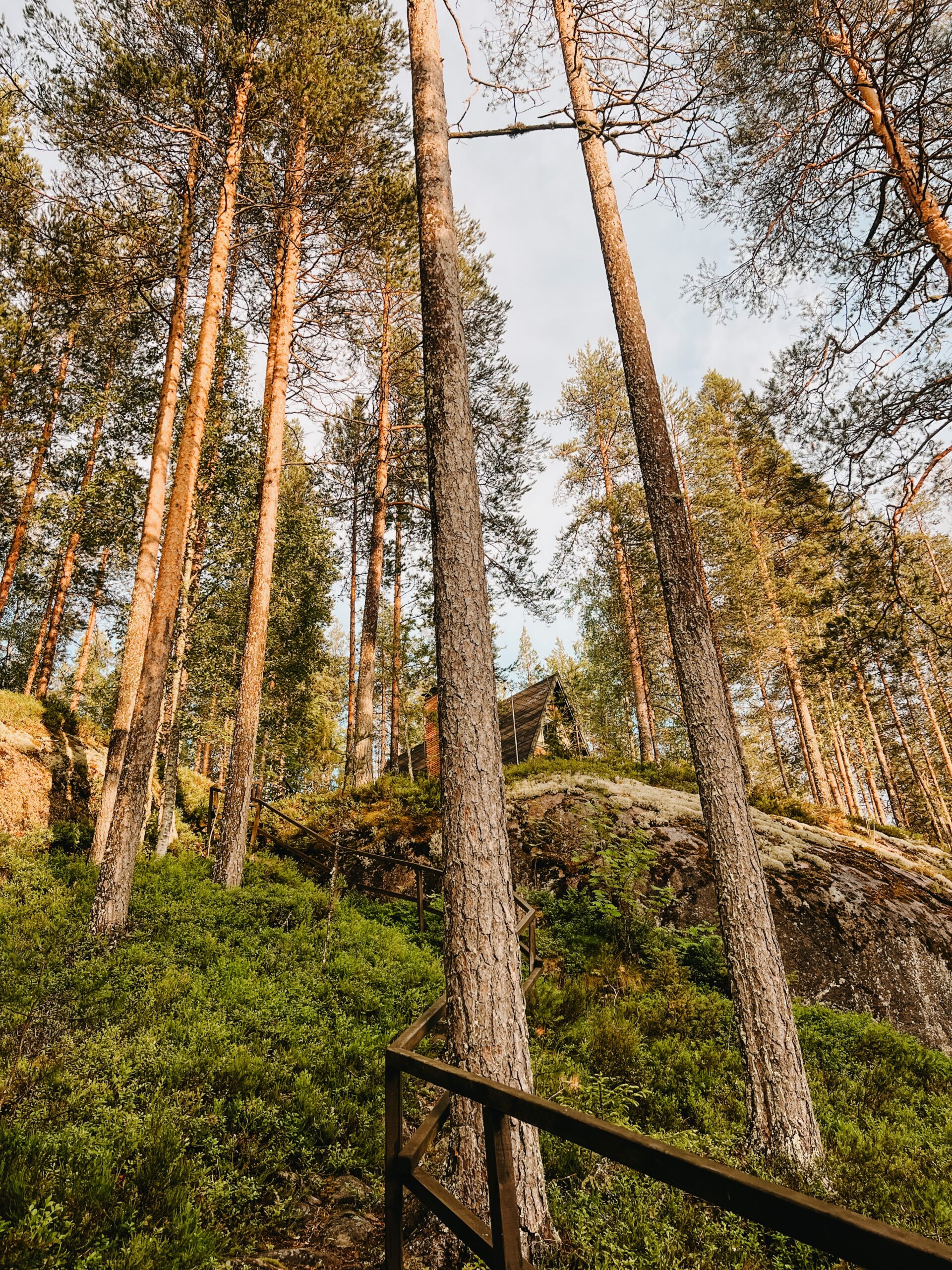
How do I find listings for cabins in Finland? Where do I start searching if I think about buying a summer cottage in Finland?
- Most common places are Etuovi and Oikotie, for finding properties in Finland. You can search here for the Loma-asunnot (holiday homes). These are mostly in Finnish only, but work well with a translation app.
- I found it very helpful to create search alerts, which would send me instant notifications as soon as something came up that matched my search parameters. This is how we got lucky with our cabin.
- You can also reach out to agents or agencies directly with what you are looking for. It didn’t work for me personally, but it is worth a try regardless.
- Facebook groups: these are very effective when it comes to the mökki community in Finland. This is one example to search for: Mökkien osto/myynti/vuokraus+mökkitontit
- Local newspapers: especially the older generation that doesn’t internet, local newspapers or even blackboards in supermarkets can be a good place to look for cabins for sale or rent. These are mostly in Finnish only.
Are there any environmental regulations or considerations to be aware of when buying a summer cottage in Finland?
Building Codes: Ensure compliance with regulations for energy efficiency and ecological materials. This can be tricky to verify with older properties.
One common thing to note is that nowadays, saunas must be a certain distance from the water if built by a lake or the seaside. Older saunas however can stay and can be renovated, as long as the roof and foundations remain the original.
Building rights: depending on the zoning regulations and size of the plot, there are likely to be limitations to the buildings rights. This means, that the livable area of whatever you build cannot exceed a certain sqm-size. This also applies to the size of decking or terraces for example, they can only be a certain percentage of the liveable space of your cabin.
Water Protection: Verify wastewater disposal systems adhere to water protection regulations. This is especially important to note with properties that are not connected to the sewage and wastewater pipe systems. This could be a greywater system or an absorption pit at the sauna, in older cottages.
Protected Areas: Check if the cabin is located in or near protected nature reserves or conservation areas. This affects what you are allowed to do and build.
Forestry Practices: Be aware of regulations governing tree harvesting, forest management and biodiversity protection. There are some regulations about what you can build or harvest.
Waste Management: Ensure proper waste disposal facilities and recycling practices. In our case, we have a basic mixed waste garbage bin used by all the cabins in our road. The fee is shared by all cottage owners in the area. For anything else, we have to drive to the nearest sortti- or jäteasema to dispose of waste.
Energy Efficiency: Consider investing in energy-efficient appliances and renewable energy sources. Many cabin-owners opt for solar panels, as electricity infrastructure prices can be higher depending on the area.
Wildlife Protection: Respect wildlife habitats and adhere to regulations regarding hunting and wildlife interactions. For example, you should know what to do with pests, such as wasps, there are also invasive species like the American mink that can be an issue.
What are the legal requirements for buying a summer cottage in Finland?
Requirements are similar to purchasing any property, real estate or land in Finland:
Identification: you must provide valid identification, such as a passport or Finnish identification card.
Funding: proof of funds, or/and financing arrangement if you’re purchasing the cabin through a mortgage or loan.
Lawyer: It’s advisable to engage a licensed real estate agent or lawyer to facilitate the transaction and ensure legal compliance. Especially as a foreigner working through the language barrier can be challenging. Not just for any contracts or paperwork, but also for negotiations with agents, owners or the local municipalities legal support can be incredibly useful. We worked with Ville Lahti from Vasara & Nuija, who helped us with anything that came our way, regarding questions about the laws, contracts, process and also about specific things to look out for. Highly recommended, we wouldn’t have this cabin without him.
Real Estate Agent or broker: most, if not all properties I came across, are managed by an agency, respectively an agency representative. They are responsible for all communications between seller, buyer and the banks; as well as all paperwork. Our agent was incredibly patient and kind, and genuinely excited to help us, which made the whole process of buying a summer cottage in Finland so much easier. I’m so grateful we trusted each other and everything went super smoothly. If you are looking for a cabin in the area of Mikkeli, reach out to Pia Hiltunen.
Written Offer/Purchase Agreement: you can decide to make an offer at any point, some people make offers without viewing the property. We made an offer at the end of our showing. This written purchase agreement must be made official through (electronically) signing it afterwards. It details the terms and conditions of the sale must be signed by both the buyer and seller. This agreement typically includes details such as the purchase price, payment schedule, and any contingencies. If you end up not going through with the sale after the written offer is signed, there is typically a penalty fee that’s a certain percentage of the asking price.
Title Search and Deed Transfer: A title search is conducted to verify the ownership history and any encumbrances on the property. This includes all listed owners and rights of use. Once cleared, the deed is transferred from the seller to the buyer. This was organised through our agent
Property Registration: The transaction must be registered with the Finnish Land Registry to officially transfer ownership rights. This can be done online and is pretty straight forward, you just must make sure to do this within the given deadlines.
Taxes and Fees: Buyers are responsible for paying various taxes and fees associated with the purchase, including transfer taxes, bank fees, and registration fees.
Permits and Approvals: Depending on the location and condition of the cabin, buyers may need to obtain permits or approvals for renovations, construction, or other activities.
Legal Due Diligence: It’s essential for buyers to conduct thorough due diligence to ensure there are no legal issues or disputes affecting the property, such as boundary disputes or environmental concerns. In our case, this was all communicated very transparently, especially regarding building rights, grounds, building history and whatnot, but it would have been very difficult for us without help.
Residency Permit (for non-EU/EEA citizens): Non-EU/EEA citizens may need to obtain a residency permit or permission from the Finnish Immigration Service to purchase property in Finland.
What are the typical costs associated with buying a summer cottage in Finland, including taxes and fees?
Purchase Price: The largest cost is typically the purchase price of the cabin itself, which varies based on factors such as location, size, amenities, and condition.
Transfer Tax (Varainsiirtovero): In Finland, a transfer tax is payable by the buyer when purchasing real estate. The tax rate is currently 2% for residential properties, including cabins. However, there are some exemptions for first-time homebuyers and certain other circumstances.
Real Estate Agent Fees: If you use a real estate agent to facilitate the transaction, you may be responsible for paying their commission, which is typically a percentage of the purchase price. This commission can vary but is usually around 3-4% of the purchase price. It is, however, more common that the seller covers the commission.
Legal Fees: Hiring a lawyer to handle the legal aspects of the transaction, such as reviewing contracts and conducting due diligence, will incur legal fees. The cost can vary depending on the complexity of the transaction and the lawyer’s rates. Ask for an estimate beforehand, but I can really only strengthen the point that this is super important, especially as a foreigner.
Notary Fees: Notarization of the purchase agreement and other legal documents may involve additional fees charged by a notary public. For us, this was 120€, with seller and buyer splitting the fee.
Registration Fees: The transfer of ownership must be registered with the Finnish Land Registry, which involves paying registration fees. These fees are typically based on the purchase price of the property.
Mortgage Fees (if applicable): If you’re financing the purchase with a mortgage, there may be fees associated with arranging the loan, such as appraisal fees, loan origination fees, and mortgage registration fees.
Home Inspection Fees (optional): While not mandatory, it’s advisable to conduct a home inspection before purchasing a cabin to identify any potential issues or defects. The cost of a home inspection varies depending on the size and condition of the property. We did not conduct an official inspection.
Utility Connection Fees: Depending on the cabin’s location, there may be fees associated with connecting utilities such as water, electricity, sewage, garbage disposal and road maintenance.
Property Insurance: Buyers will need to arrange property insurance to protect their investment against risks such as fire, theft, and natural disasters. The cost of insurance can vary based on factors such as the property’s location and value. Ours is with Lähi-Tapiola.
Are there specific areas or regions in Finland known for having cabins for sale?
Lakeland: Finland’s Lakeland region, with its numerous lakes and forests in central and eastern Finland, is a popular destination for summer cottages – if not the most popular. Areas such as Saimaa, Päijänne, and Kuopio are particular favourites.
Archipelago Sea: Located in southwestern Finland, the Archipelago Sea is a vast network of thousands of islands, offering picturesque landscapes, excellent boating, fishing, and opportunities for outdoor recreation.
Turku Archipelago: Close to the city of Turku on the southwest coast, the Turku Archipelago is another sought-after destination for summer cottages, known for its stunning landscapes, charming islands, and maritime culture.
Eastern Finland: Regions such as North Karelia and South Savonia in eastern Finland offer beautiful lakeside settings and unspoiled nature.
Lapland: Lapland and its unique sceneries and nightless nights are something truly special and loved by many wilderness enthusiasts. Accessibility can be an issue here, depending on where you live and limited usability throughout the seasons.
You can find statistics on free-time homes around Finland here
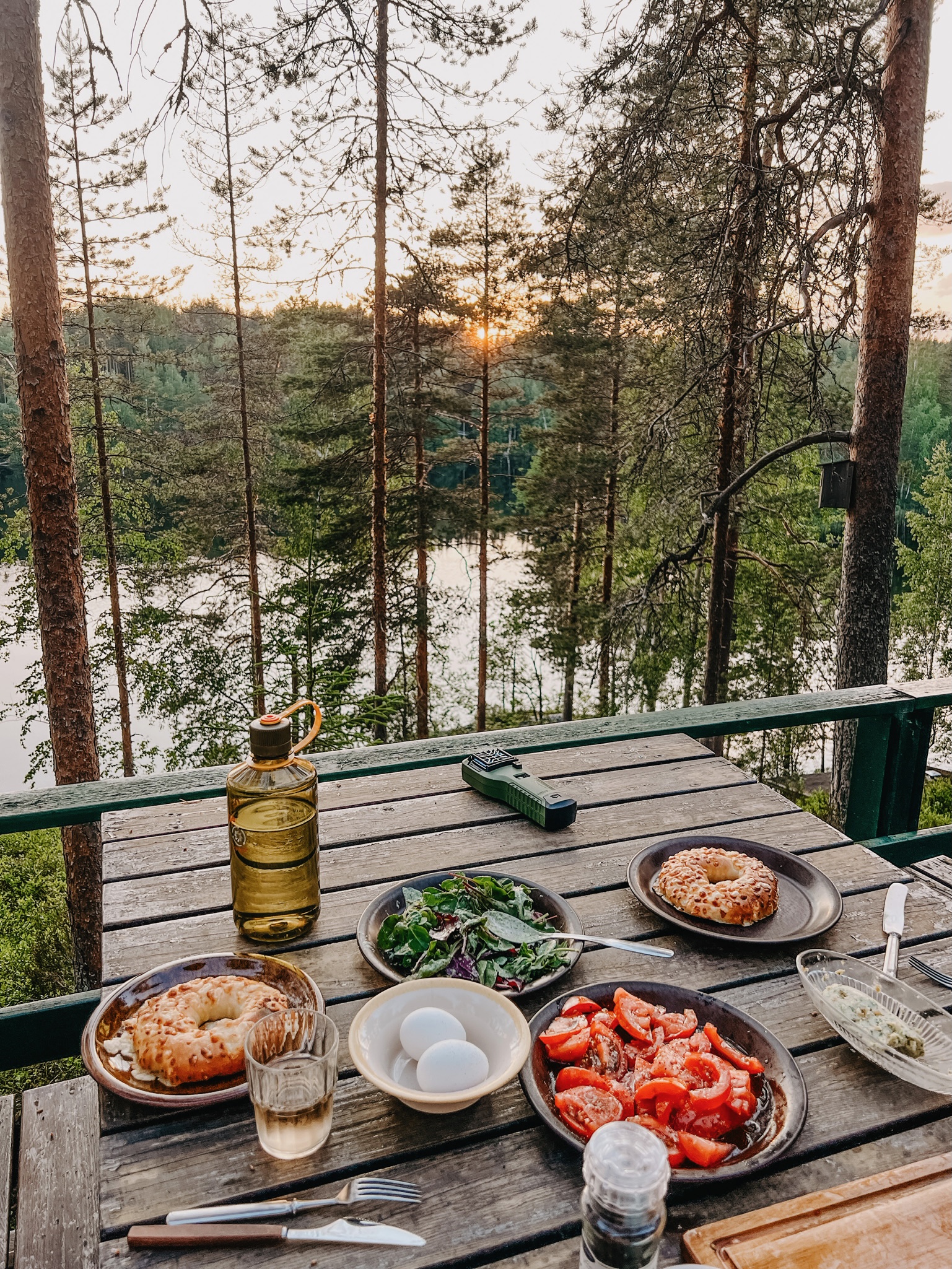

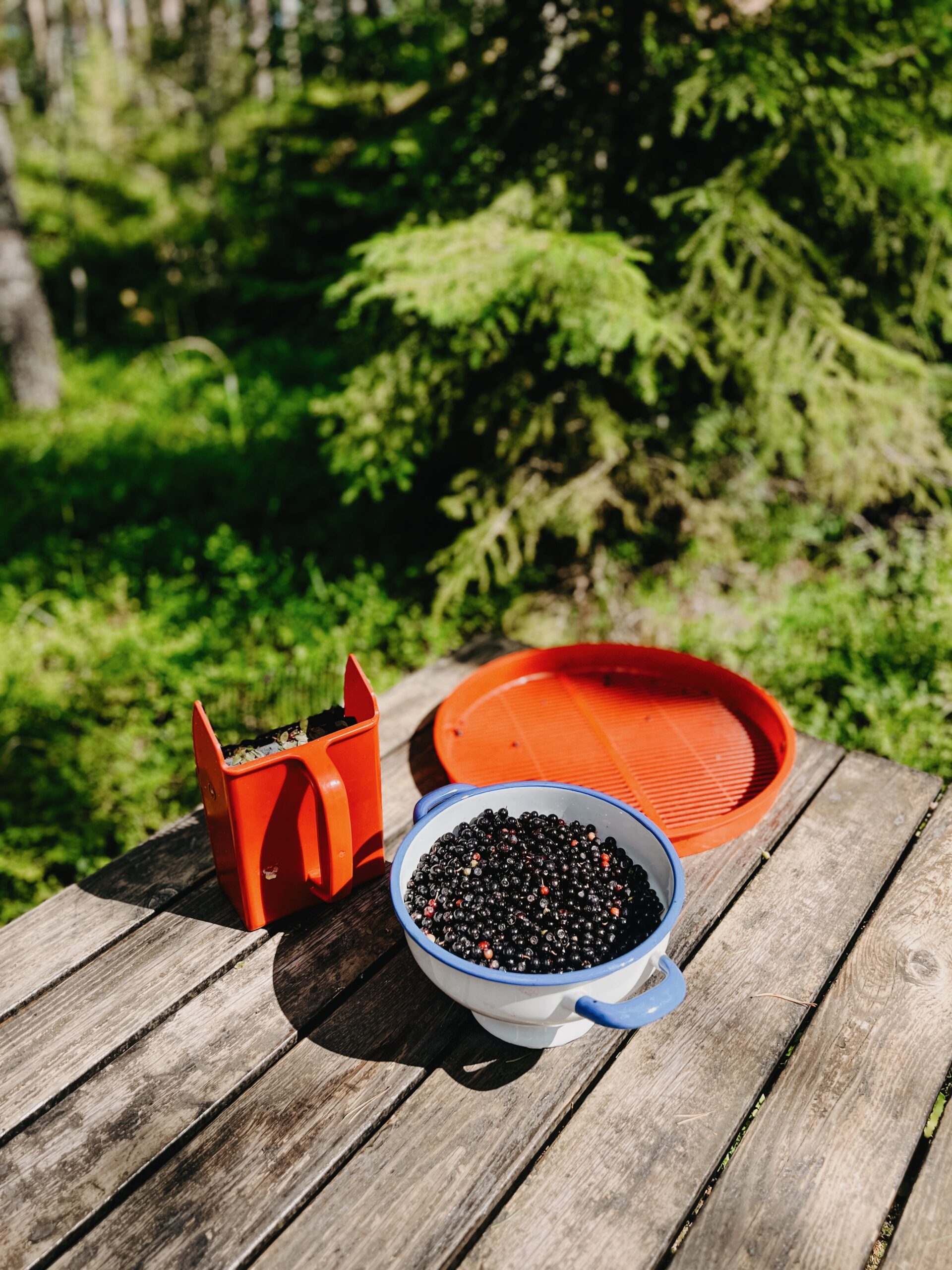
What amenities and utilities are typically available in Finnish cabins?
Electricity: Most, but not all, Finnish cabins are connected to the electrical grid, providing power for lighting, appliances, and electronic devices. Depending on when the cabin was built, the wiring can be outdated and might need upgrading, also to meet modern safety standards. Electricity costs in more remote areas can be higher. It’s quite common these days to equip your cabin with solar panels for basic electricity needs.
Running Water: Many cabins have access to running water either from a municipal water supply or a private well. Some cabins may also have a water pump system to draw water from a nearby lake or stream, which is what we are planning to do. However, most cabins that are built on holiday plots are not connected to water or sewage systems. For those not used to this, it’s a very important factor when considering buying a summer cottage in Finland.
(Indoor) Plumbing: Modern cabins often feature indoor plumbing with toilets, sinks, and showers, or bathtubs. However, most older or more basic cabins will have an outhouse or dry toilet instead. Those are easy to maintain and environmentally friendly if handled correctly.
Heating: Heating options in Finnish cabins can include wood-burning stoves, electric heaters, or even central heating systems fueled by wood, electricity, or oil. Wood-burning saunas are also common and provide a traditional way to relax and unwind.
Kitchen Facilities: Cabins typically have a kitchen area equipped with basic appliances such as a stove, refrigerator, and sink. Some may also have a microwave, dishwasher, or other conveniences.
Sauna: A sauna is a quintessential feature of Finnish cabins, offering a relaxing and rejuvenating experience. I haven’t seen any cabins without their own private sauna, either within the main house or in a separate saunamökki.
Outdoor Spaces: Finnish cabins often have outdoor spaces such as decks, patios, or porches where you can enjoy the natural surroundings, barbecue, or socialise with friends and family. This also depends on the type of plot you want. We wanted a forest surroundings, so it was important for us to have trees and berries around us. Others may prefer a type of lawn, garden or beachy plot.
Internet and Communication: While some remote cabins may lack internet access, many modern cabins are equipped with Wi-Fi or have access to mobile networks for communication and internet browsing. We use our phone hotspot for wifi needs, which works well enough in Finland, even when further out in the sticks.
Waste Management: Cabins typically have systems in place for waste management, including garbage disposal and recycling facilities. Some cabins may also have composting toilets or septic tanks for wastewater. In our cabin, we have a shared garbage bin that’s emptied once a week in the summer, and not in the winter.
Security Features: Depending on the location and your preferences, you can install security features such as locks, alarms, or surveillance systems (both for security and also wildlife watching) while unoccupied.
Are there any seasonal considerations or challenges when buying a summer cottage in Finland?
Winter Accessibility: During winter, cabins may become inaccessible due to heavy snowfall. Make sure the cabin has proper access roads or arrangements for snow removal for year-round access if you want to be able to use the cabin in the winter. Cabins on islands can be accessed by snowmobile in the winter when the ice is thick enough.
Heating and Insulation: Finnish winters can be cold, so it’s important to consider the heating systems and insulation of the cabin. Ensure that the cabin is adequately insulated and equipped with efficient heating sources such as wood-burning stoves or electric heaters. Other heat sources are petroleum heaters (petroolilämmitin) or air-water-heat-pumps (Ilmavesilämpöpumppu). These work best for well-insulated buildings.
Snow Load: Heavy snow accumulation can pose structural risks to cabins, especially older or poorly maintained buildings. Assess the cabin’s structural integrity and ensure it can withstand the weight of snow.
Ice and Water Safety: Lakes and rivers may freeze during winter, presenting opportunities for activities like ice fishing and skating. However, you should also be aware of potential safety hazards such as thin ice and take precautions when engaging in winter water activities. Never go on the ice alone.
Spring Thaw: Spring thaw can bring melting snow and ice, leading to flooding and water damage. Inspect the cabin for signs of water damage and ensure proper drainage and waterproofing measures are in place.
Summer Pests: In summer, cabins may be susceptible to pests such as mosquitoes, flies of all kinds, and ticks. There are different measures you can take to ensure that the cabin has screens or other protections against insects.
Fire Risk: Forest fires can occur during dry summer months, posing a risk to cabins located in forested areas. Buyers should be aware of fire safety regulations and ensure that the cabin has proper fire prevention measures in place.
Maintenance: As temperatures drop in autumn, it’s important to prepare the cabin for winter by performing maintenance tasks such as sealing windows, draining water pipes, and storing outdoor furniture.
Are there any specific insurance requirements for owning a cabin in Finland?
Yes, you must get home insurance for a vacation property. The details differ from each provider, but typically should protect you against any damage from natural forces (water, flooding etc.), it has also been recommended to us to get additional insurance against wildlife damage. This is important also when you consider all the costs adding up to buying a summer cottage in Finland.
What are the options for transportation to and from a cabin in Finland?
Yes, you will need a car to access most cabins.
Can cabins in Finland be rented out to tourists or used as vacation rentals?
Yes. Some things to consider:
Regulations and Permits: Comply with any local regulations or ordinances regarding short-term rentals. In some areas, there may be specific requirements or permits needed for renting out properties.
Taxation: Rental income earned from vacation rentals is subject to taxation in Finland. Be aware of your tax obligations, and report rental income to the Finnish Tax Administration.
Safety and Liability: Inform guests about, and take appropriate measures to address any potential hazards on the property. Liability insurance can provide protection in case of accidents or injuries involving guests.
Are there any specific permits required for activities such as hunting, fishing, or gathering wild berries or mushrooms near the cabin?
In Finland, the Everyone’s Right (jokaisenoikeus) allows individuals to pick wild berries, mushrooms, and flowers from forests and other natural areas. However, there are some restrictions and regulations to be aware of. Some examples:
Hunting: Hunting in Finland requires a valid hunting licence, which can be obtained by passing a hunting exam.
Fishing: Fishing in Finland also requires a valid fishing permit, which can be obtained from various outlets such as local authorities, tourist information centres, or online. The permit may vary depending on the type of fishing (e.g., freshwater or sea fishing) and the duration of the permit.
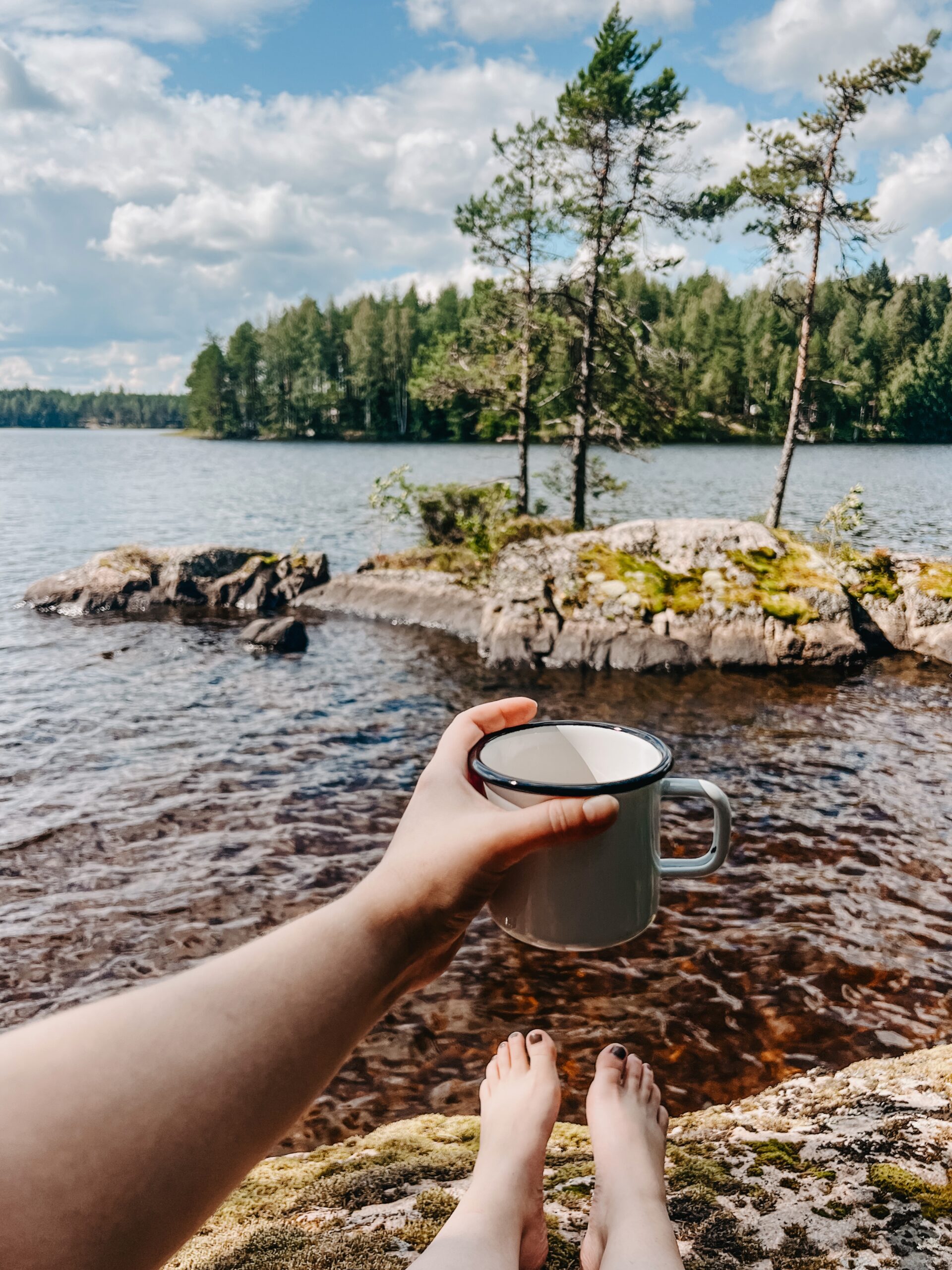
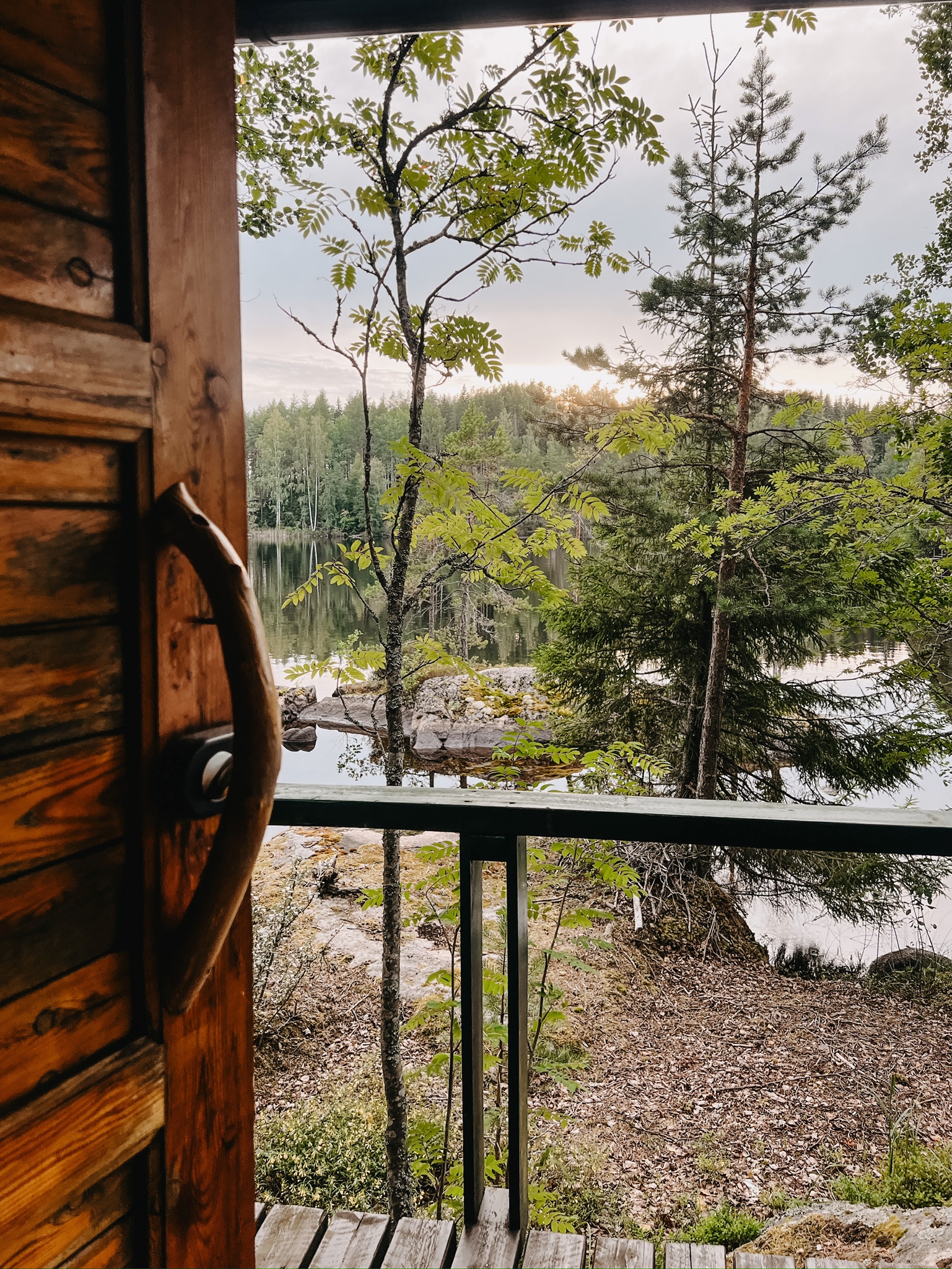
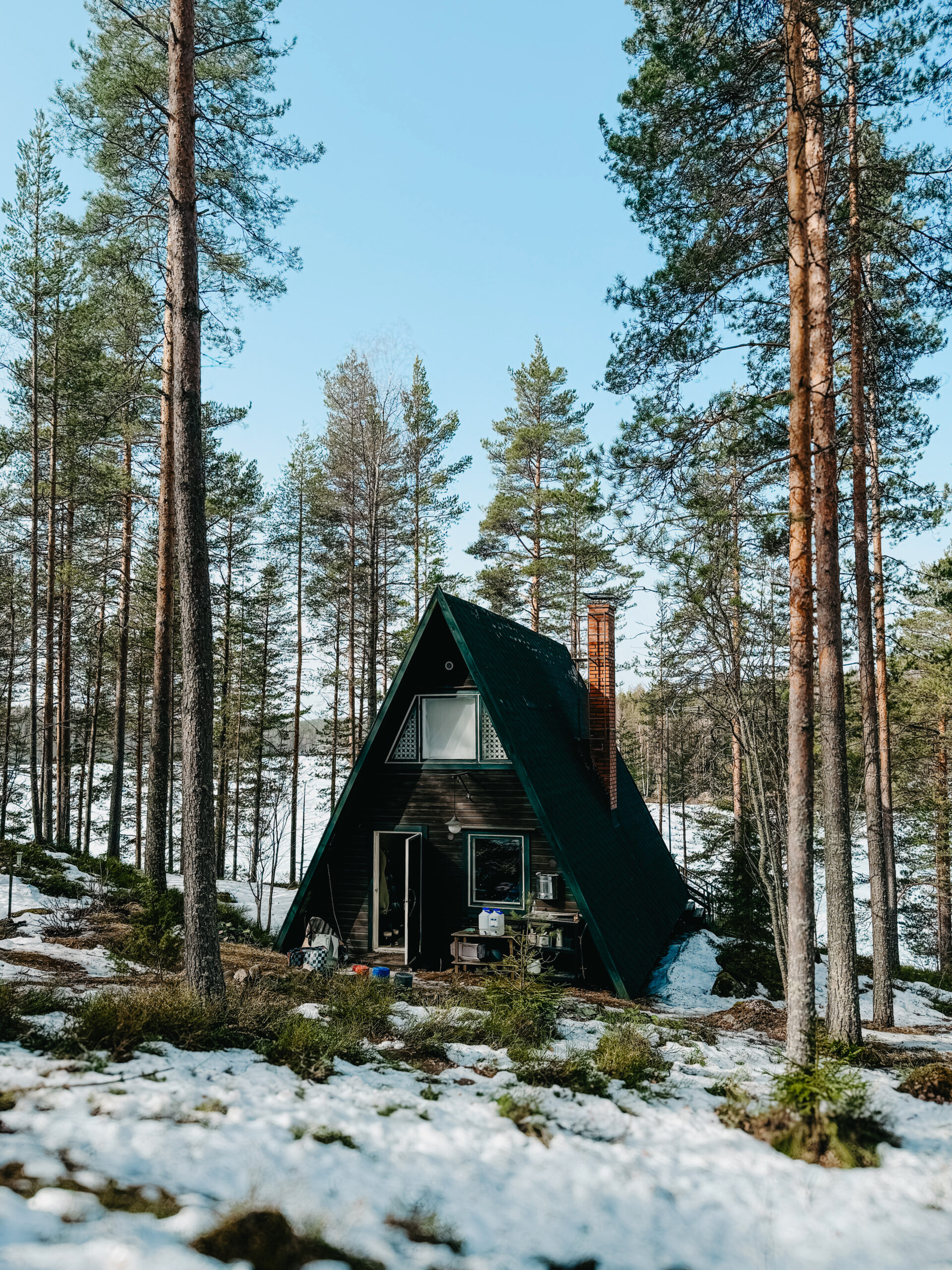
Are there any potential risks or hazards associated with wildlife, such as bears or wolves, in the vicinity of the cabin?
In Finland, encounters with large wildlife such as bears and wolves are relatively rare, but they can still occur, especially in certain regions where these animals are more common. Most wildlife you see is harmless, such as foxes, wolverines, ferrets, mink, squirrels, birds, mice or also snakes.
What are the rules and regulations regarding fire safety and prevention at the cabin?
- Follow local regulations on campfires, and keep an eye on the forest fire warnings from weather authorities.
- Use local firewood to prevent pests.
- Create a fire ring or pit around the fire.
- Clear vegetation around the fire area to prevent spreading.
- Supervise fires at all times.
- Maintain fire safety equipment in the cabin: Have water nearby to extinguish the fire. Have a fire extinguisher and fire blankets nearby any fire source.
- Fully extinguish the fire before leaving.
BONUS: Finnish summer cabin vocabulary list
- Mökki: Cabin or cottage, typically used for summer vacation.
- Kesämökki: Summer cabin.
- Sauna: Traditional Finnish steam bath, often found in cabins.
- Järvi: Lake, as many cabins are located near lakeshores.
- Metsä: Forest, as cabins are often situated in wooded areas.
- Laituri: Pier or dock, often used for swimming or boating.
- Grilli: Grill or barbecue, for outdoor cooking.
- Terassi: Terrace or patio, for outdoor relaxation and dining.
- Puucee / Huussi: outhouse, composting toilet. Separate building.
- Soutuvene: Rowboat, used for boating on lakes.
- Marjastus: Berry picking, a popular summer activity near cabins.
- Sienestys: Mushroom picking, another common activity in Finnish forests.
- Kalastus: Fishing, a favourite pastime for many cabin-goers.
- Aurinko: Sun, as summer cabins are enjoyed during sunny days.
- Lintujen laulu: Birdsong, a characteristic sound of the Finnish countryside.
- Yöttömän yön aurinko: Midnight sun, experienced in northern Finland during the summer months.
- Hiljaisuus: Silence, often appreciated in the tranquil surroundings of cabins.
- Hyttysverkko: Mosquito net, essential for keeping insects out during summer evenings.
- Kukkalaatikko: Flower box, used for decorating cabin exteriors.
- Kesäheinä: Summer hay or grass, used for traditional decorations in cabins.
- Huvimaja: Gazebo or summer house, often found in cabin gardens.
- Kesäkeittiö: Summer kitchen, an outdoor cooking area commonly found near cabins.
- Mökkisauna: Cabin sauna, specifically referring to the sauna found in a summer cabin.
- Lomaparatiisi: Vacation paradise, describing the idyllic setting of a summer cabin.
- Auringonlasku: Sunset, enjoyed from the comfort of a cabin’s terrace or lakeside.
- Puusauna: Wood-fired sauna, a traditional type of sauna often found in Finnish cabins.
- Juhannus: Midsummer, a major holiday celebrated in Finland and often spent at summer cabins.
- Laavu: Lean-to shelter or open-sided hut, used for picnics or camping near cabins.
- Talviturkki: Winter coat, referring to the protective covering of snow that blankets cabins during the winter months.
- Rantasauna: Lakeside sauna, situated close to the water’s edge for easy access to swimming.
- Pihapiiri: Courtyard or cabin grounds, the outdoor area surrounding a cabin.
- Sähköttömyys: Off-grid living, referring to cabins without access to electricity or other modern utilities.
- Takka: Fireplace or hearth, providing warmth and comfort on chilly summer evenings in cabins.
- Kukkaniitty: Flower meadow, often found near cabins and adding to their scenic beauty.
- Kesäpäivä: Summer day, perfect for enjoying the outdoors around the cabin.
- Veneily: Boating, a popular activity on Finland’s numerous lakes and rivers near cabins.
- Mökkiläinen: Cabin dweller, referring to someone who spends time at a summer cabin.
- Puuhamaja: Activity hut or shed, where outdoor equipment and tools are stored near the cabin.
- Kesäilta: Summer evening, ideal for relaxing on the cabin’s terrace or by the lake.
- Mökkipolku: Cabin path or trail, leading from the cabin to nearby natural areas or amenities.
- Hyttyskarkotin: Mosquito repellent, essential for enjoying evenings outdoors near the cabin.
- Rauha: Peace or tranquility, a characteristic ambiance of Finnish summer cabin life.
- Kalapaikka: Fishing spot, where cabin-goers can try their luck at catching fish.
- Mökkikylä: Cabin village or community, comprising several cabins in close proximity to each other.
- Pilkkominen: Wood chopping or splitting, a common chore at cabins to prepare firewood for saunas and stoves.
- Mansikkametsä: Strawberry forest, where wild strawberries can be foraged near the cabin.
- Kesäyö: Summer night, often characterized by the midnight sun in northern Finland, providing extended daylight hours for cabin activities.
- Kesäjuhla: Summer festival or celebration, often held at or near cabins with family and friends
- Mökkireissu: Cabin trip or excursion, referring to the journey to and stay at the summer cabin.
- Sienisato: Mushroom harvest, the gathering of wild mushrooms often done near cabins during the summer months.
- Pihakivi: Patio stone or stepping stone, used for pathways and landscaping around the cabin.
- Kesälukeminen: Summer reading, enjoyed on lazy afternoons or evenings at the cabin.
- Mökkituli: Cabin fire, typically lit in outdoor fireplaces or fire pits for warmth and ambiance.
- Huvimajakirppis: Gazebo flea market, a community event often held in cabin areas where residents sell goods and crafts.
- Kesäpuutarha: Summer garden, where residents may grow flowers, herbs, or vegetables near the cabin.
- Vedenottopiste: Water access point or tap, providing water for drinking and other purposes near the cabin.

